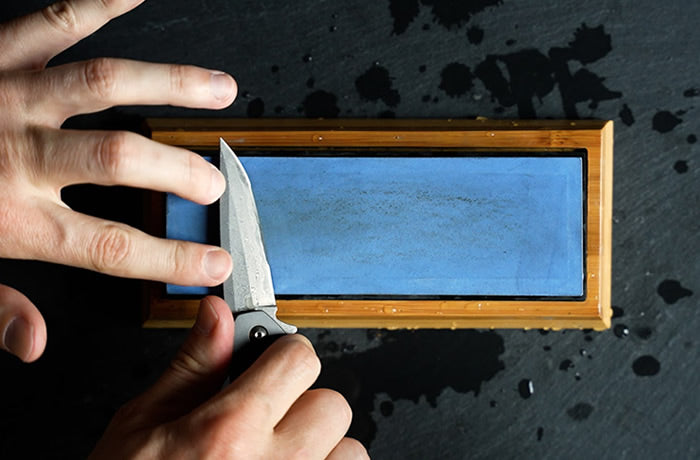
The stability of our wood here at Carved has never been better and we have hundreds of products available right now to show that off.
We love working with discarded pieces of wood. Learning to stabilize has been a long and difficult journey. In this post, I’ll run you through our 4 step process for ensuring your wood is stabilized for your next project.
Here are the steps at a glance:
Step #1: Dry your wood
Step #2: Vacuum out the air trapped in your wood
Step #3: Soak your wood
Step #4: Cook your wood
Step #1: DRY Your Wood

First things first, the wood MUST BE dry. I cannot overstate this, I am tempted to fill this paragraph with that statement over and over and over again. Right now you are pretending to understand me. You think, “oh dry… he must mean less than 10% moisture.” NO! Dry means dry.
We’re talking about 0% moisture! Now you know I’m crazy and are about to stop reading this article… fine, go… you’ll be back. I would love to link to the best moisture meter out there, but as I’m sure you know, a moisture meter is unreliable under 10%. So, here is a link to a gram scale with two decimal places.
The challenge is multifaceted by nature. Literally, nature… you know, Mother Nature… She has made all the wood species unique and one-of-a-kind. That means they all dry in different ways. The solution is to forget about the start and focus on the end. Because the end goal across all species is dryness.
Back to that scale you just bought. The most reliable way to ensure 0% moisture is to weigh your piece of wood, then place it in your drying oven (more about that in a minute) until it stops “losing weight”. What? What do you mean?
Let me explain. Take the weight of your wood. Write this down and note the time. Now about that oven. Nothing fancy here, a standard toaster oven is the “go-to” hobbyist’s dry oven for this process. Set your toaster oven to 220° F and place your wood inside. After several hours take your piece of wood out and note the weight and time. Place your piece of wood back in the oven for several more hours. Again take the wood out and measure its weight.
The goal is that the weight stops going down. Congratulations if you have made it this far without cutting corners. If not, someday you will come back and follow these steps more closely. And on that day, I say, “job well done.” Okay… great… step 1 is complete.
Step #2. VACUUM Out The Trapped Air

This next step is the most technical, but don’t let that scare you. Look what you have already accomplished… dry wood! That is no small feat. Here is a link to the vacuum pump and chamber I use. Also at this step, you need to buy a stabilizing resin. I use Cactus Juice.

Take your dry wood and submerge it under the Cactus Juice. I like to use a small bucket that fits inside the vacuum chamber. That way the chamber isn’t sitting there full of resin and you can load and unload your piece(s) of wood. Make sure your piece of wood is securely submerged in the resin.
Give yourself plenty of space above the top of the resin and the top of your bucket. When you apply the vacuum it is going to froth and foam. You don’t want to spill, but if you do it just pools at the bottom of the vacuum chamber and you can recover it later.
Apply the vacuum and begin the second long phase of waiting. The goal is to vacuum out all the air that is trapped in the wood. I know, I didn’t think there was air inside there either. I mean where could it be. Trust me it’s in there and there’s a lot of it.
The lead indicator you have completed this step is when there are very few tiny bubbles coming out of the wood. This can take anywhere from 4 to 24 hours. The key is that you start this step with dry wood. Release the vacuum from the chamber and turn your pump off.
Step #3: SOAK Your Wood

Can I just say, “great work”! You are well on your way to become a woodworking expert. Very few people have done what you have just done. As a small reward for your effort, I’m going to make this next step the easiest to follow.
Next, release the vacuum and remove the bucket holding your pieces of wood from the vacuum chamber. Make sure your pieces are still fully submerged. At this point, they are going to start drinking up the resin. So, if you do not have enough resin in the bucket with your piece of wood it will become exposed. Make sure it is fully submerged. That’s it! If your piece is submerged you’ve done it… now wait.
Wait? Really? Again, wait? Yes, you need to let your piece of wood soak. In fact, as a second reward for making it this far why don’t you go draw a bath and take a soak yourself and relax. Your wood needs to soak for 2x the time it was under vacuum. I know you know how long it took to vacuum because you were watching the clock the whole time in disbelief at how many bubbles kept coming. Take that amount of time and double it. That’s the soak step.
Step #4: COOK Your Wood
It’s all downhill from here. But don’t get too prideful yet. Many of my downhill bike rides have ended in a high-speed crash. Not you though, I can tell. Take your piece and place it back into your toaster oven. If you have more than one piece of wood make sure the pieces are not touching during the cure step.
To save yourself some headache, place a tray below your piece of wood to catch the resin runoff. You need to get the internal core temperature of your piece of wood up to 190° F for a minimum of 10 minutes. But do you think we are going to do the minimum? Heck no! Not after all this work. We are going to “round up”.
The length of time it will take to cure your piece of wood will depend on the species and size of your specific piece of wood. 2 hours is a good minimum. And at this point a 2-hour step seems fast, am I right?
Once your pieces of wood are cured, remove them from the oven and allow them to cool. Scrap off any excess resin that has crystallized on the outside of your piece of wood. Now take one large step backward and look at what you've done! You have taken that moldy, punky, junk piece of wood and turned it into a piece that will last a lifetime… or at least a lot longer than before.
Now you are ready to begin!
Now it is up to you to take this newly stabilized piece of wood and create something truly beautiful! Here's a look at a few of the items we make at Carved. You can check out more of the 1 of One, wood + resin items we make here. Good luck!






